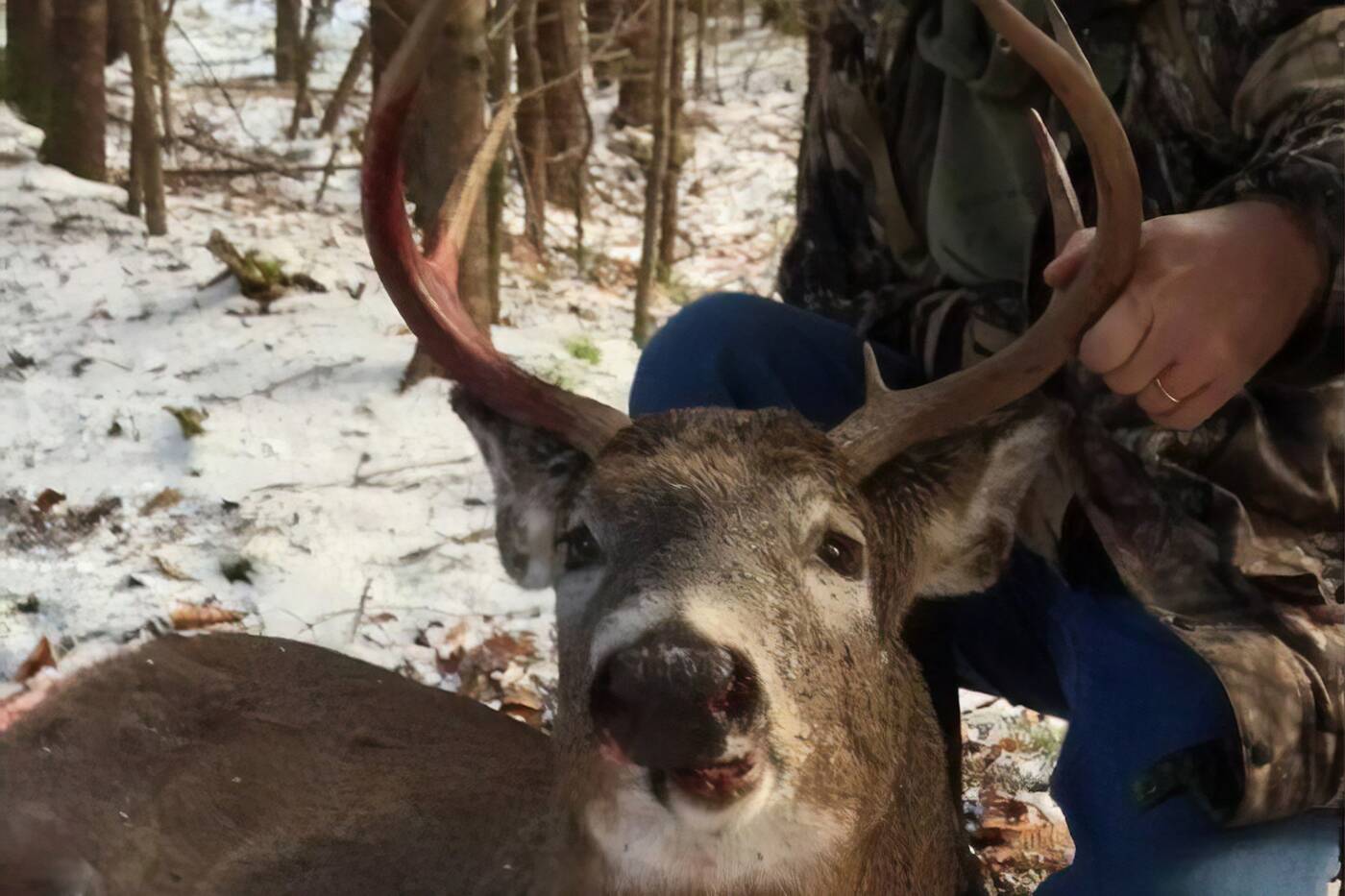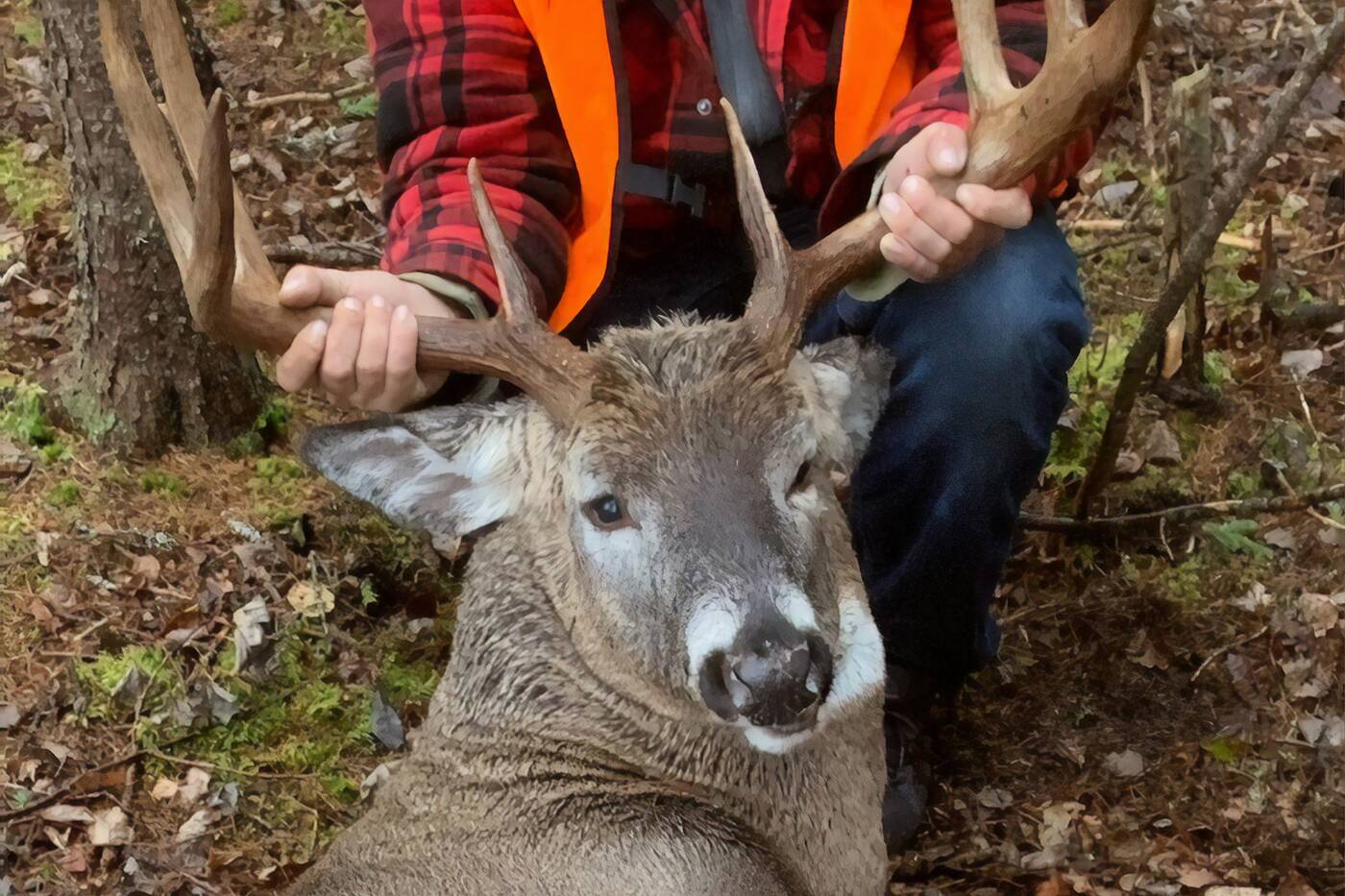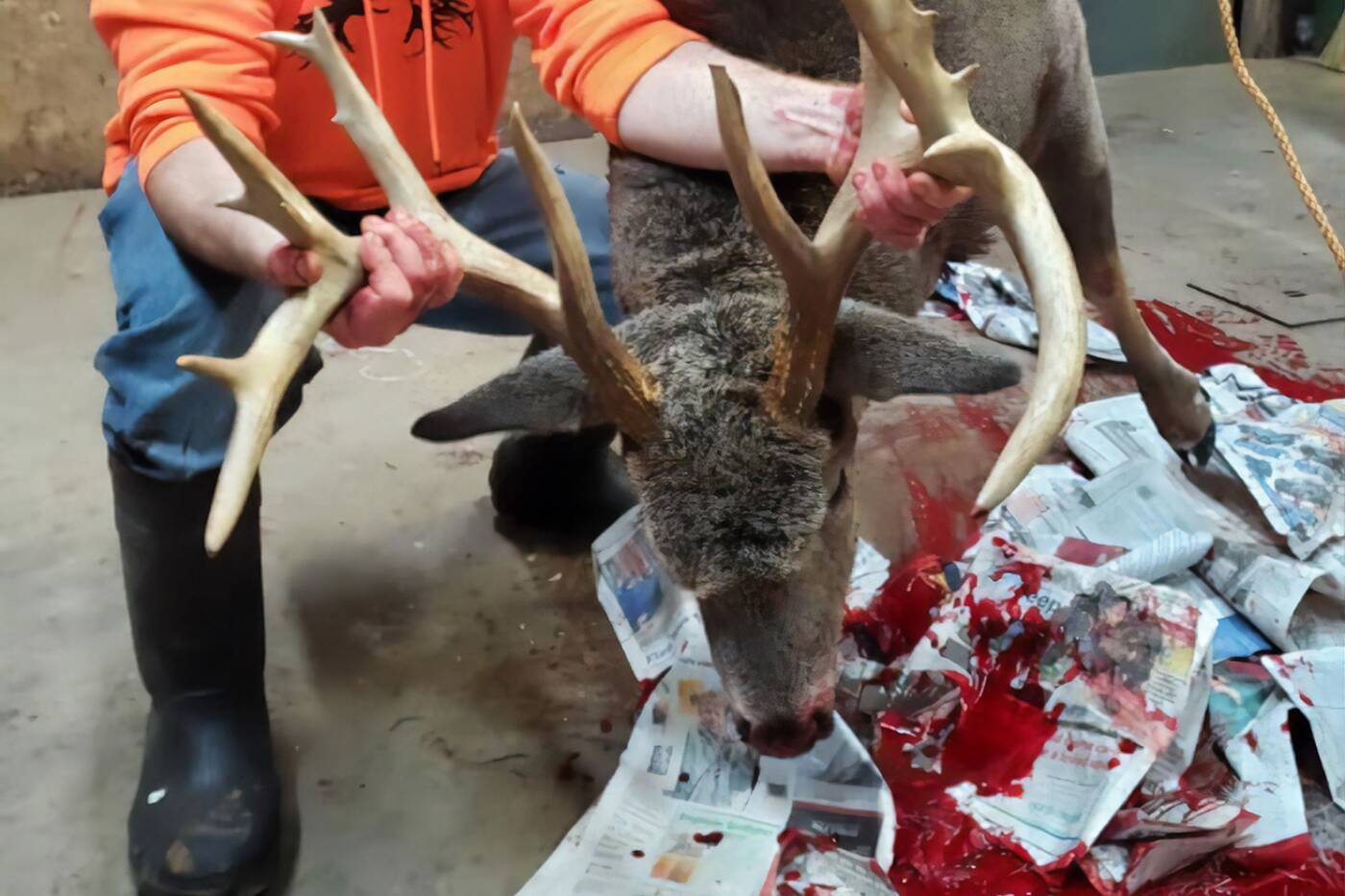
Canadian hunters keep posting photos of dead animals and it's sad and gruesome
There is a particular kind of person who enjoys the thrill of stalking and killing an unsuspecting living creature (and taking photos with its bloody carcass), especially in 2019.
For those who aren't familiar with the details of the controversial sport, Canada is currently in the middle of hunting season, which runs from mid-September to mid-December for animals like moose, elk, deer and waterfowl.
And Canadian hunters who have apparently learned nothing from the trophy hunting photos that have gone viral — bad viral, that is— in recent years have been taking to social media to post photos of their gory kills.

A hunter poses with his prize in a photo in the Nova Scotia Trail Cams Facebook group.
Though many might think of big cats or tusked mammals found on the plains of Africa when they think of "trophy hunting," species of Canadian wildlife like mountain lions and caribou are some of the most popular kills for trophy hunters from the U.S., which has the biggest trophy hunting advocacy groups in the world.
And while the U.K. is moving to ban trophy hunting imports and places like California have taken progressive steps such as outlawing the manufacture and sale of new fur products, it seems like rural parts of Canada and the U.S. are lagging behind.

This photo on Nova Scotia Trail Cams sparked a few jokes from group members.
Ecosystems are being damaged and species are going extinct due to human interference and poaching — not to mention the fact that killing for sport is just plain cruel, tasteless and unnecessary in most cases — but the issue is complicated, as the money brought in from hunting and fishing licences and tag fees goes toward fish and wildlife management, which includes, ironically, wildlife conservation efforts.
There is also the argument that those who do actually eat the animals they hunt are being far more humane than carnivores who purchase factory-farmed meat at their local grocery store.

Hunters classify bucks based on the number of points on their antlers. Photo from Nova Scotia Trail Cams.
But with plant-based food options (and the number of people who choose them) on the rise and animal activist groups growing in number and popularity, it makes sense that some of the more archaic forms of outdoorsy fun and generational bonding, like hunting, are becoming less and less socially acceptable.
There is also the fact that the hunters seem to insist upon bringing further indignity to the animals they've killed by posting photos with their trophies and cracking jokes about them, making their motives in general seem... questionable.
"Not paper trained yet?" one group member commented on a photo of a dead buck bleeding onto some scattered newspapers. "Lol kiddin. Great ol buck!"

This graphic photo was posted to the same group today.
"Congrats to dad for praising your son," another user wrote about a photo one hunting dad posted of his son's kill. "The one thing in life is to make our dads proud of us."
Though provinces in Canada have developed pretty strict rules and regulations around hunting and licensing, including a draw selection process and calculations of what constitutes a "sustainable harvest" based on herd numbers, it is difficult to confront photos and posts such as these and not question how necessary the hobby is in this day and age.
Latest Videos
Join the conversation Load comments







